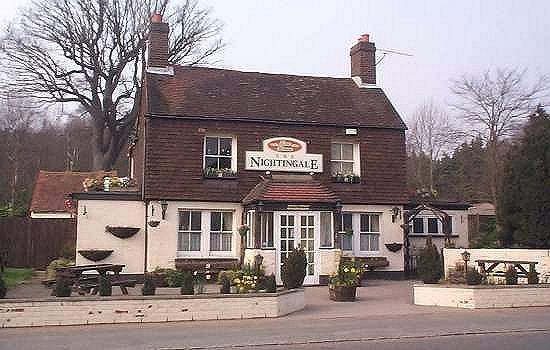Sgt. Francis George Rees,
|

(I believe this to be Frank Rees) |
Born c. Nov. 1920 near Farnham, Surrey, England.
Died on the night of 22 March, 1944, near Mohrweiler, Germany.

|

|
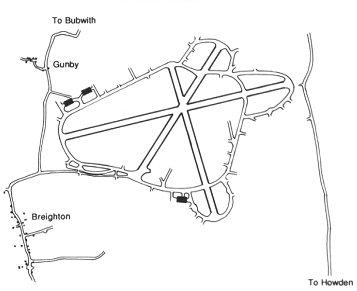
|

2009 |
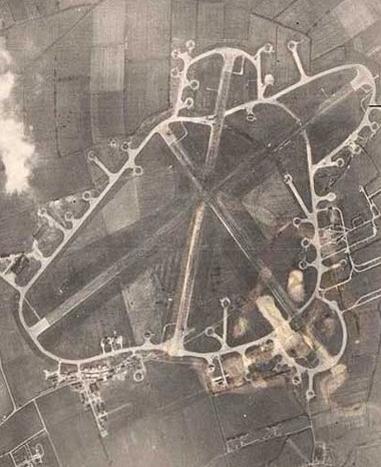
WWll |
Frank joined the RAFVR and served with 78 (Bomber) Squadron, based at Breighton, near Bubwith, Yorkshire. Squadron records and Commonwealth War Graves records show him as a navigator on Halifax bombers. On his last operation Frank flew in Halifax Mk lll, code EY-O, s/n LW512.

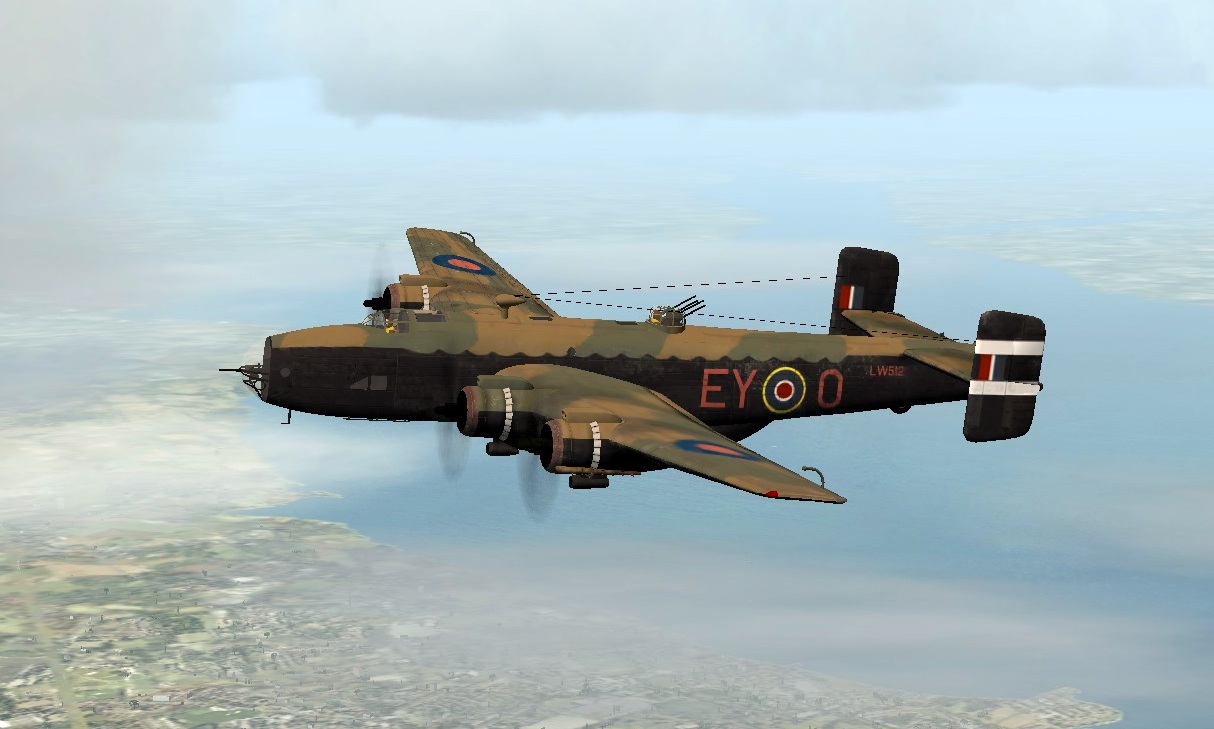

|

Note that the tail markings are slightly different from those above. |

|
On the night of 22 March, 1944 LW512 (EY-O) departed Breighton at 1907 for a
raid on
Frankfurt am Main. The operation took the aircraft out over the North Sea then
inland to a point south west of Bremen from which the raid flew directly south
towards Frankfurt. It was on the westbound leg from Frankfurt that the
aircraft was intercepted by a German night fighter and shot down.

|
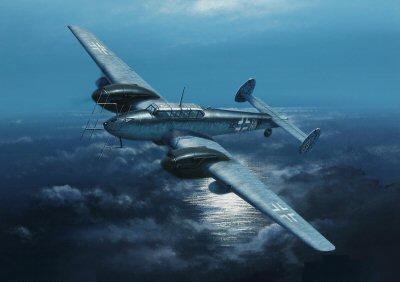
|
One reference suggests that LW512 was attacked by a Ju88 but a second reference appears to more convincingly suggest that the night fighter was a Me Bf110 flown by German Ace, Oblt. Martin "Tino" Becker, 2./NJG 6, who departed Finthen (Mainz) at 2020 and returned at 2313 having claimed a remarkable score of six aircraft shot down. He was flying a Me Bf110 coded MK when he intercepted LW512 near Trier at 18,000 feet and shot it down at 2239. Out of control the bomber hit the ground near the town of Mohrweiler, Germany.
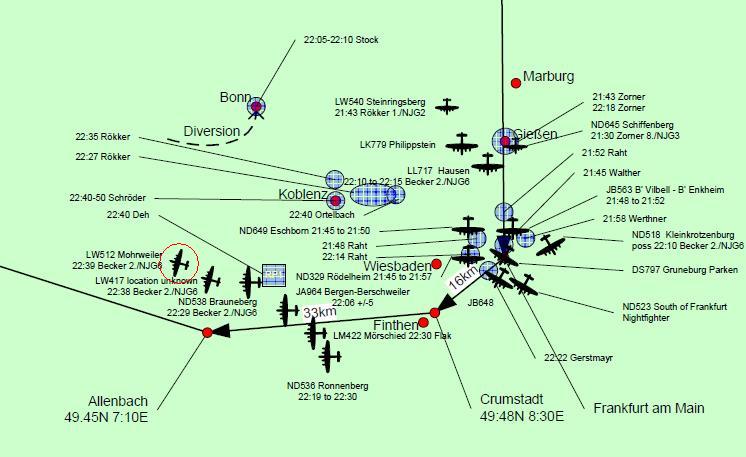
|
by kind permission of Robert Lapes
Only the rear gunner Sgt. S. A. Waterhouse managed
to bail out. He was interned in Camps L6/357, PoW No.3392.
Again there is a discrepency as to some of the facts. One reference suggests
that the rest of the crew was buried in the Reichswald Forest Cemetery while
another shows the Rheinberg Cemetery, both of which are close to one another,
the latter appearing to be the correct reference. However, both may be correct
as many war dead were buried in local cemeteries then later moved to post
war military cemeteries.

|
The crew of Halifax LW512.
The above photograph was kindly supplied by Matt Liddy, the nephew of the mid-upper gunner Sgt. T. Liddy who is seen standing to the left of pilot Sgt. J. Hampson (right rear). Tony Hibbert, RAF 78 Sqn. voluntary historian thinks that, because of the size of his brevet, Frank Rees might be the man to the left of Sgt. Liddy. I suspect that Frank is front and centre as his brevet appears to show an "N" for navigator but I may be wrong. So who are the rest and which one is actually Frank Rees? Can anyone help identify these men? If so, please contact me at the address at the bottom of my home page.

"Nobody Unprepared"
78 Squadron "Operations Record Book" shows the following which appear to be the last missions in which Frank Rees participated:
|
|
Type & Number |
|
|
Up |
Down |
|
|
|
|
LW512 |
Sgt. Rees, F. (Nav) Sgt. Renwick, J. (Bomb) Sgt. Beard, P. (W/Op) Sgt. Toon, S. (F/Eng) Sgt. Waterhouse, (R.G.) Sgt. Liddy, T. (M.U.) |
TRAPPES |
|
|
and bombed at 2119 hours from a height of 15,000 feet. Target identified by Red T.I.s, and lake to N.E. Three Red T.I.s in bombsight. Several explosions seen under T.I.s. |
|
|
|
LW795 |
Sgt. Rees, F. (Nav) Sgt. Renwick, P. (Bomb) Sgt. Beard, P. (W/Op) Sgt. Toon, S. (F/Eng) Sgt. Waterhouse, S. (R.G.) Sgt. Liddy, T. (M.U.) |
LE-MANS |
|
|
and bombed at 2141 hours from a height of 15,000 feet. Target identified by glow of Red T.I.s, through cloud. Defences were greater than expected. |
|
|
|
LV795 |
Sgt. Rees, F. (Nav) Sgt. Renwick, F. (Bomb) Sgt. Beard, P. (W/Op) Sgt. Toon, S. (F/Eng) Sgt. Waterhouse, S. (R.G.) Sgt. Liddy, T. (M.U.) |
LE-MANS |
|
|
and bombed at 0045 hours from a height of 15,000 feet. Bombed mean of 2 Red T.I.s seen to cascade. Bomb bursts well concentrated around T.I.s. Several fires seen in Northern portion of Target area. Concentrated attack. |
|
|
|
LW512 |
Sgt. Rees, F. (Nav) Sgt. Renwick, F. (Bomb) Sgt. Beard, P. (W/Op) Sgt. Toon, S. (F/Eng) Sgt. Waterhouse, S. (R.G.) Sgt. Liddy, T. (M.U.) |
STUTTGART |
|
|
owing to fuel transfer pump being u/s. Furthest point reached 48 16/01 12W. Bombs jettisoned in sea. |
|
|
|
LW512 |
Sgt. Rees, F. (Nav) Sgt. Renwick, F. (Bomb) Sgt. Beard, P. (W/Op) Sgt. Toon, S. (F/Eng) Sgt. Waterhouse, S. (R.G.) Sgt. Liddy, P. (M.U.) |
FRANKFURT |
|
|
and bombed at 2210 hours, from a height of 22,000 feet. Target identified by P.F.F. Red and Green T.I.s. Bombed centre of 2 Red T.I.s. Some fires seen in Target area. |
|
|
|
LW512 |
Sgt. Rees, F. (Nav) Sgt. Renwick, F. (Bomb) Sgt. Beard, P. (W/Op) Sgt. Toon, S. (F/Eng) Sgt. Waterhouse, (R.G.) Sgt. Liddy, T. (M.U.) |
FRANKFURT |
|
|
|
|
Raid Descriptions from the "Royal Air Force, Bomber Command, Campaign Diary, March 1944"
|
"TRAPPES"
6/7 March 1944 261 Halifaxes and 6 Mosquitos of Nos 4, 6 and 8 Groups on the first of a series of raids on railway targets in France and Belgium in preparation for the invasion. No aircraft lost.
|
|
"LE MANS"
7/8 March 1944 304 aircraft - 242 Halifaxes, 56 Lancasters, 6 Mosquitos - of Nos 3, 4, 6 and 8 Groups to Le Mans. No aircraft lost. The target was cloud-covered but heavy damage to the railway yards was believed to have been caused. Approximately 300 bombs fell in the railway yards; 250 wagons were destroyed, many railway lines were cut, a turntable was put out of action and 6 locomotives were hit.
|
|
"LE MANS"
13/14 March 1944 213 Halifaxes and 9 Mosquitos of Nos 4,6 and 8 Groups on a repeat raid to Le Mans. 1 Halifax lost. The local report shows that the Maroc Station and two nearby factories were severely damaged, with many lines being cut and 15 locomotives and 800 wagons being destroyed.
|
|
"STUTTGART"
15/16 March 1944 863 aircraft - 617 Lancasters, 230 Halifaxes, 16 Mosquitos - ordered to attack Stuttgart. The German fighter controller split his forces into 2 parts. The bomber force flew over France nearly as far as the Swiss frontier before turning north-east to approach Stuttgart. This delayed the German fighters contacting the bomber stream but, when the German fighters did arrive, just before the target was reached, the usual fierce combats ensued. 37 aircraft - 27 Lancasters, 10 Halifaxes - were lost, 4.3 per cent of the force. 2 of the Lancasters force-landed in Switzerland. Adverse winds delayed the opening of the attack and the same winds may have been the cause of the Pathfinder marking falling back well short of the target, despite the clear weather conditions. Some of the early bombing fell in the centre of Stuttgart but most of it fell in open country south-west of the city. The Akademie was damaged in the centre of Stuttgart and some housing was destroyed in the south-western suburbs.
|
|
"FRANKFURT"
18/19 March 1944 846 aircraft - 620 Lancasters, 209 Halifaxes, 17 Mosquitos - to Frankfurt. The German fighter force was again split. One part was lured north by the Heligoland mining operation but the second part waited in Germany and met the bomber stream just before the target was reached, although cloud made it difficult for these fighters to achieve much success. 22 aircraft - 12 Halifaxes, 10 Lancasters - were lost, 2.6 per cent of the force. The Pathfinders marked the target accurately and this led to heavy bombing of eastern, central and western districts of Frankfurt. The later phases of the bombing were scattered but this was almost inevitable with such a large force; new crews were usually allocated to the final waves.
|
|
"FRANKFURT"
22/23 March 1944 Frankfurt: 816 aircraft - 620 Lancasters, 184 Halifaxes, 12 Mosquitos. Again, an indirect route was employed, this time crossing the Dutch coast north of the Zuider Zee and then flying almost due south to Frankfurt. This, and the Kiel minelaying diversion, confused the Germans for some time; Hannover was forecast as the main target. Only a few fighters eventually found the bomber stream. 33 aircraft - 26 Lancasters, 7 Halifaxes - were lost, 4.0 per cent of the force. The marking and bombing were accurate and Frankfurt suffered another heavy blow; the city's records show that the damage was even more severe than in the raid carried out 4 nights earlier. Half of the city was without gas, water and electricity 'for a long period'. All parts of the city were hit but the greatest weight of the attack fell in the western districts. The report particularly mentions severe damage to the industrial areas along the main road to Mainz. 162 B-17s of the Eighth Air Force used Frankfurt as a secondary target when they could not reach Schweinfurt 36 hours after this RAF raid and caused further damage. The Frankfurt diary has this entry: "The three air raids of 18th, 22nd and 24th March were carried out by a combined plan of the British and American air forces and their combined effect was to deal the worst and most fateful blow of the war to Frankfurt, a blow which simply ended the existence of the Frankfurt which had been built up since the Middle Ages."
|
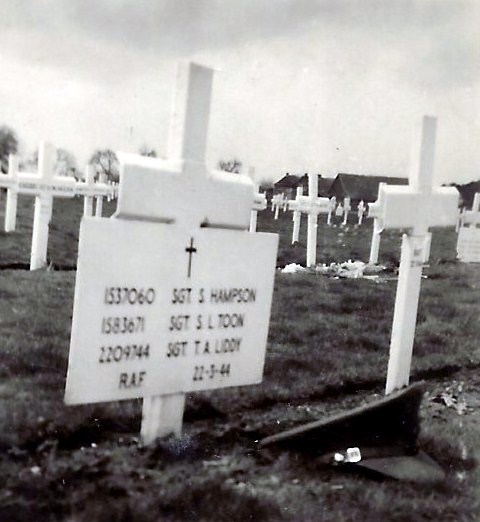
|
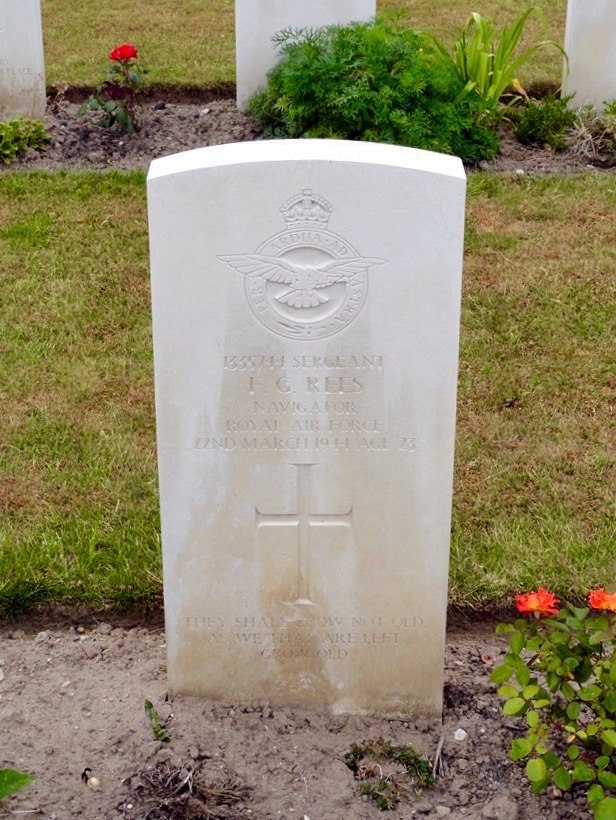
|
Photo credit: Des Philippet
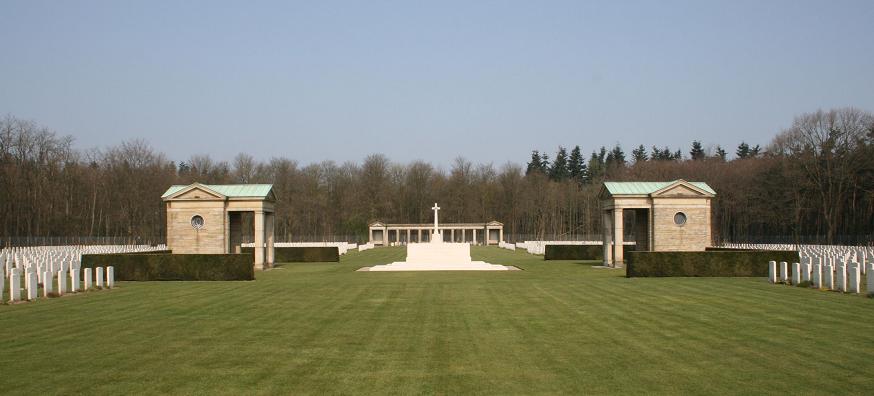
|
Commonwealth War Graves Commission.
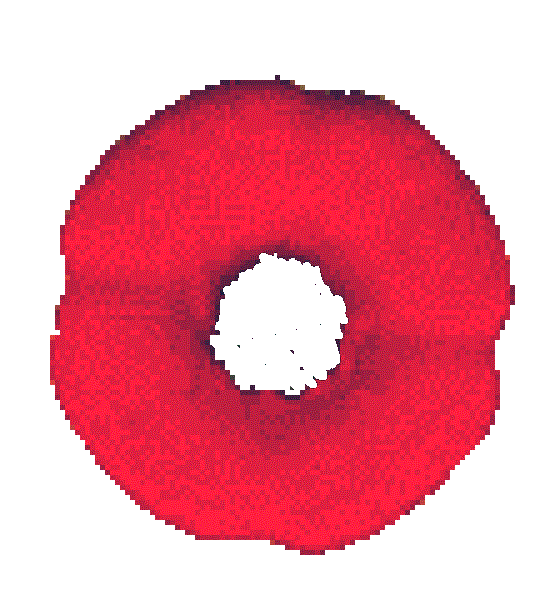
|
|

|
|
Where have all the young men gone?
Long time passing.
|


